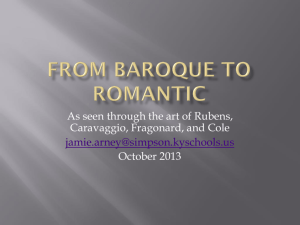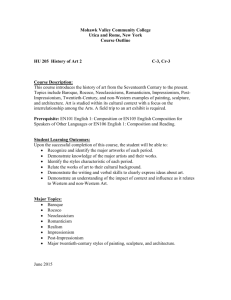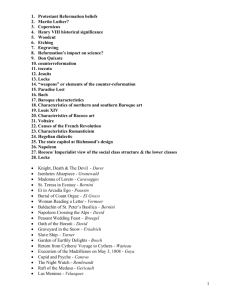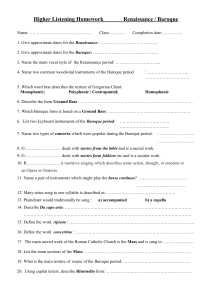The Rococo Period
advertisement
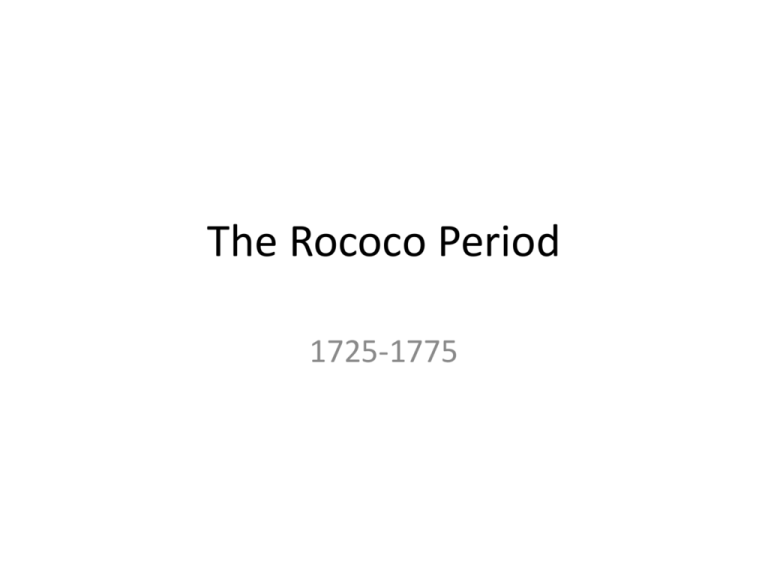
The Rococo Period 1725-1775 What is Rococo? • Derives from the French word rocaille, which refers to the delicate scroll of the seashell • Rococo style transitioned the grandeur of the Baroque to the poise and clarity of the Classical • Emphasis on pleasantness and prettiness • Luxurious but refined—not as gaudy as some Baroque style art • Flourished in France • Product of the wealthy aristocracy—reflected a decadent court society • Society and manners followed strict systems with elegance, grace, refinement and love viewed as most important • Worship of wealth, pleaseure and power superseded the worship of God • Music and art reflected lightness and pleasure instead of an appeal to taith and emotion as in the Baroque Versailles Painting • Maintained many of the techniques of the Baroque, especially with light and shade • Formal organization less open, lines less diffused, a bit less action • Main difference lies in subject matter and mood • Reflected a preference for the delicate and superficial Antoine Watteau • 1684-1721 • Active during shift from Baroque to Rococo • Work shows the vitality of the Baroque, coupled with the demands of the French court, displaying artificial grandeur • Embarkation for the Island of Cytera (CP 42) – Tells the story of the courtly steps involved in convincing a lady to join the festivities and set sail for the mythical island of love – Reflects amorous sentiments rather than strong expressive emotions – Use of light and shade less dramatic, figures more clearly delineated, form less open and action more static than Baroque paintings Francois Boucher • 1703-1770 • Painted miniature scenes for the King • Madame de Pompadour (CP 43) – Depicts the spirit of the aristocracy through her posture and dress – Open book suggests intellect – Skillful use of light and shade creates the look of silk on her gown – Lacks the drama and emotion of the Baroque Music • Like art, music was lovely and delicate, but lacked the passion and grandeur of the Baroque • Much attention was given to decorative details of musical instruments – Patterns carved into instruments themselves and cases – Sides and tops of keyboard instruments often painted • Francois Couperin (1668-1733) – Composed primarily for keyboard instruments— harpsichord, organ – Known for delicate ornamentation throughout music



